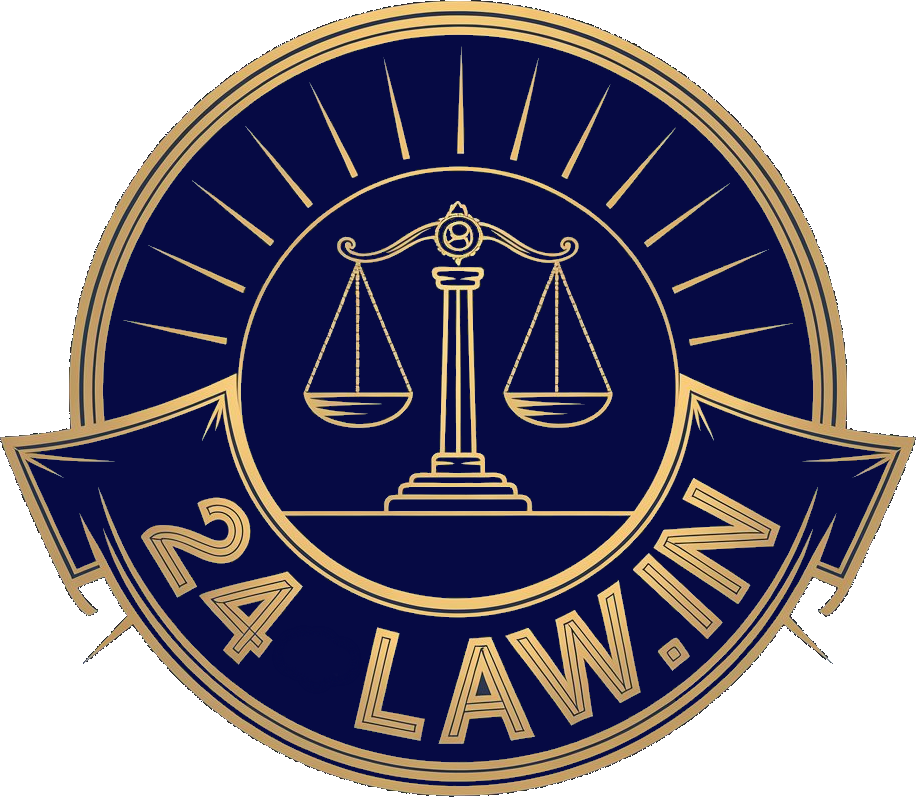To Prevent Unscientific Hill Excavation, Kerala High Court Directs NHAI to Install Boards Displaying Quarry Permits and Emergency Contacts Along Road Work Zones
- Post By 24law
- August 1, 2025

Isabella Mariam
The High Court of Kerala Division Bench of Chief Justice Nitin Jamdar and Justice Basant Balaji directed that metallic boards displaying contact information of responsible authorities must be erected at regular intervals along stretches of roads where quarrying or hill slope excavation is carried out for highway development. The Court issued this directive in the interest of public safety, stating that "residents of the area, in case of emergency, do not have any authority to contact as any delay will be fatal."
Accepting the submission from the National Highways Authority of India (NHAI), the Court directed that the Project Implementation Units (PIUs) of NHAI must be the designated point of contact. This directive is to be incorporated into existing and future agreements involving such excavation works. The Court's judgement comes in the context of a Public Interest Litigation stating excessive and unscientific soil extraction from hill slopes, causing environmental damage and posing a landslide risk. The judgment stated that such feedback mechanisms are essential to prevent harm and mitigate risks during large-scale infrastructure development.
The Public Interest Litigation was filed by twenty-five petitioners, all residents of Chelannur Panchayath in Kozhikode District. They alleged that excavation works associated with the construction of the National Highway from Kasaragod to Thiruvananthapuram had exceeded permissible limits. This, they contended, had caused significant alteration of hill topography, severe environmental degradation, and increased the risk of landslides.
The petitioners submitted that the excavation activities affected a residential area comprising more than 100 individuals. Nearby institutions such as schools and temples, as well as a river, were reportedly being polluted as a result. According to the petitioners, these activities were carried out in violation of conditions stipulated in the quarrying permit.
A report dated 4 December 2024 by the District Geologist corroborated the petitioners' concerns. It stated that the quarrying conditions had been violated and that "there is now a high possibility of the bund falling down during heavy rains and flooding the nearby roads and houses." The petitioners, therefore, sought immediate judicial intervention to halt the excavation and direct the implementation of safety measures, including slope stabilization.
The Court considered various official correspondences submitted as part of the case record. Exhibit P2 was a letter dated 16.05.2024 from the Executive Engineer, PIU-PMGSY, to the District Collector, while Exhibits P4, P5, and P6 documented formal complaints filed by the residents and local organizations. These complaints were addressed to multiple authorities, including the police, the Village Officer, and the Revenue Divisional Officer.
As per an order dated 18 December 2024, the Court placed the initial responsibility on the District Collector, directing that action be taken in response to the Geologist's report. Subsequently, a memo filed on 4 February 2025 contained a report from the Collector stating that appropriate steps had been initiated to ensure compliance with quarrying permits.
The Collector's report acknowledged that unscientific soil extraction had occurred and stressed that "continuous monitoring would be required to ensure that the licence holders do not exceed the quarrying activities beyond the permit granted to them." It was also recorded that the petitioners' complaints had been addressed and that precautionary measures were being implemented under the supervision of engineers.
Despite these assurances, the Court noted that the remedial actions had been taken only after damage had already occurred. The judges thus turned their attention to the broader issue of preventive mechanisms and timely interventions. They specifically considered the lack of a feedback or complaint mechanism for local residents during emergencies.
The petitioners submitted that there was no system in place for contacting relevant authorities in real-time when emergency situations arise during excavation on hill slopes. This issue was placed before multiple government agencies, including the State of Kerala, the Ministry of Environment, Forest and Climate Change, and the Kerala State Pollution Control Board.
Statutory provisions were also examined. Rule 10(i) of the Kerala Minor Mineral Concession Rules, 2015 mandates that permit holders must erect a metallic board in Malayalam at a prominent place near the quarry entrance. This board should display the name and address of the permit holder, the mineral concession number and date, the mineral to be extracted, the permit number and date of expiry, the quantity of permitted extraction, the area of extraction, and the use of explosives, if any.
To determine whether NHAI's concessionaire agreements incorporated this requirement, the Court examined a sample agreement submitted by the Project Director of NHAI. The agreement stipulated that the concessionaire must comply with applicable laws and permits. NHAI submitted that this clause encompassed Rule 10(i).
However, the petitioners pointed out a practical difficulty: in road excavation projects, the concept of a fixed "quarry entrance" is not applicable. Therefore, erecting a board only at the entrance was deemed unworkable. This contention was accepted by NHAI, which then proposed that boards containing the required information be installed at regular intervals along the road stretch.
The Court considered this proposal to be a viable solution and directed that such an approach be implemented.
The Court, in its judicial reasoning, observed that "this Public Interest Litigation highlights the absence of ways to inform the authorities when the excavation of hill slopes exceeds the permissible limits posing threat of slope destabilization."
Further, the Bench stated: "These steps were taken by the authorities after the damage had taken place. Had the authorities taken the action in time, the damage could have been avoided."
On the issue of feedback mechanisms for residents, the Court noted: "The Petitioners pointed out that when the hill cutting or excavation for roads takes place on hill slopes, residents of the area, in case of emergency, do not have any authority to contact as any delay will be fatal."
To address this, the Court referred to Rule 10(i) of the 2015 Rules, quoting: "The permit holder shall erect a notice board in Malayalam at a prominent place with a minimum size of 1 metre X 1.5 metres in a metallic board near to the entrance of the quarry."
The Court further examined the concessionaire agreements and stated: "The learned counsel for the National Highway Authority of India has tendered an affidavit sworn by the Project Director... the term of the agreement contains a clause that the concessionaire will undertake or perform all such acts as may be necessary in accordance with this agreement and applicable law and permits."
On the issue of practicality in road-based quarrying, the Court recorded: "If the quarrying activities for the National Highways Authority of India are carried out along the stretch of a road, the stipulation of erecting a metallic board near to the entrance of the quarry is unworkable."
Accepting the alternative, the Court noted: "A metallic board containing the information stipulated under Rule 10(i) of the Rules of 2015 can be erected at regular intervals along the stretch of the road, as may be determined and found necessary."
In addressing concerns about contact points for emergencies, the Court recorded: "The main concern emphasised by the Petitioners during the hearing was their inability to immediately contact the concerned authority or person in the event of an emergency."
On the State’s suggestion, the Court wrote: "The learned Senior Government Pleader suggested that the contact details of the Geologist could be displayed. However, it was pointed out that normally the Geologist will not be stationed in proximity to the site..."
NHAI’s solution was accepted, and the Court observed: "The learned counsel for the National Highway Authority of India pointed out that Project Implementation Units are set up for the area and suggested that the details of the officer in-charge... can be displayed on boards placed at regular intervals..."
The Court approved this mechanism, stating: "This initiative would at least provide the residents of the area an opportunity to contact the relevant person in case of any emergency."
Proceeding on the submissions and materials placed before it, the High Court issued its final directive: "We dispose of this petition accepting the statement of the National Highway Authority of India that it will issue necessary instructions to the concessionaire, either by way of a separate communication or by incorporating the stipulation into the agreement, to erect metallic boards at regular intervals as specified along the stretch of road where quarrying activities are being carried out."
The Court further directed: "These boards will display the details required under Rule 10(i) of the Rules of 2015, as well as the contact information of the officer in-charge of the Project Implementation Unit of the National Highway Authority of India for the relevant area..."
Lastly, the Court mandated that: "Steps will be taken as per law to incorporate this stipulation in its future agreements where the contract is of a similar nature."
With these directions, the writ petition was disposed of.
Advocates Representing the Parties:
For the Petitioners: Sri. Vinod Singh Cheriyan, Sri. T.M. Khalid, Smt. K.P. Susmitha, Shri. Jeswin James, Sri. P.B. Sahasranaman
For the Respondents: Shri. Lejo Joseph George, Sri. T. Naveen (SC, Kerala State Pollution Control Board), Shri. Mathews K. Uthuppachan, Shri. Atul Mathews, Shri. B. Rahul Krishnan, V. Techchand (Sr. GP), B.G. Bidan Chandran (SC), T. Naveen (SC, Kerala Pollution Control Board)
Case Title: Pradeep Kumar P. & Others vs. State of Kerala & Others
Neutral Citation: 2025:KER:56665
Case Number: WP(C) No. 44868 of 2024
Bench: Chief Justice Nitin Jamdar and Justice Basant Balaji


